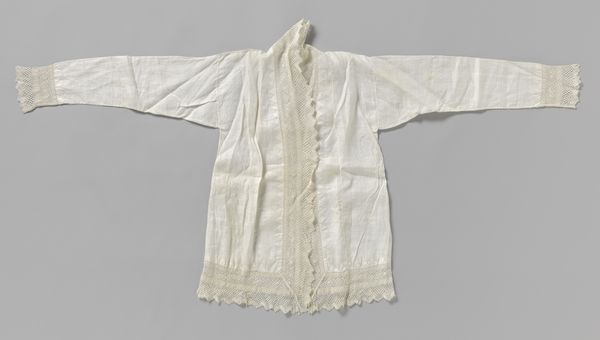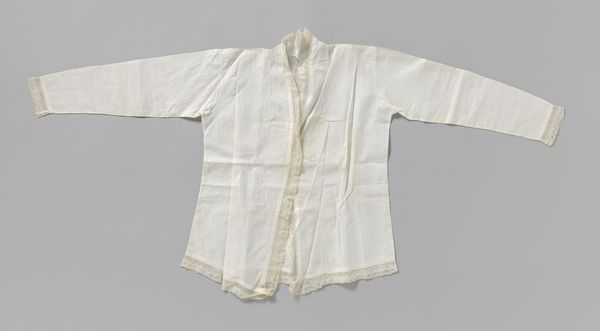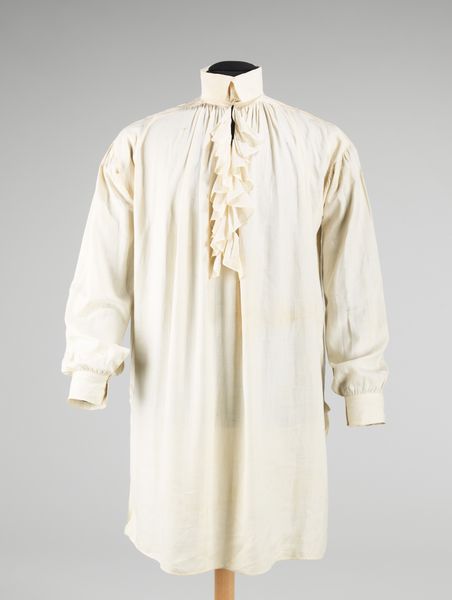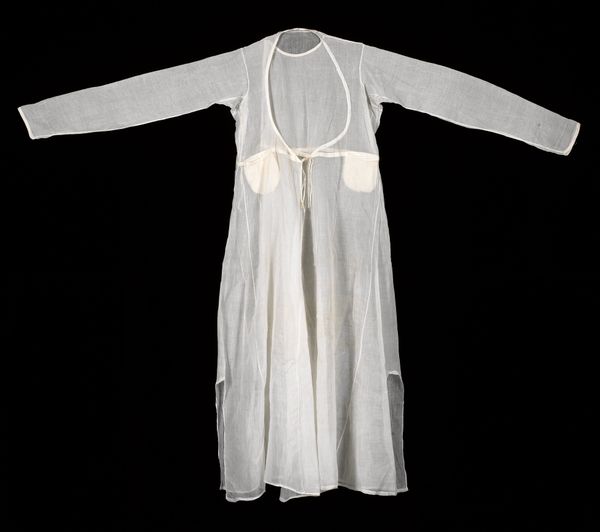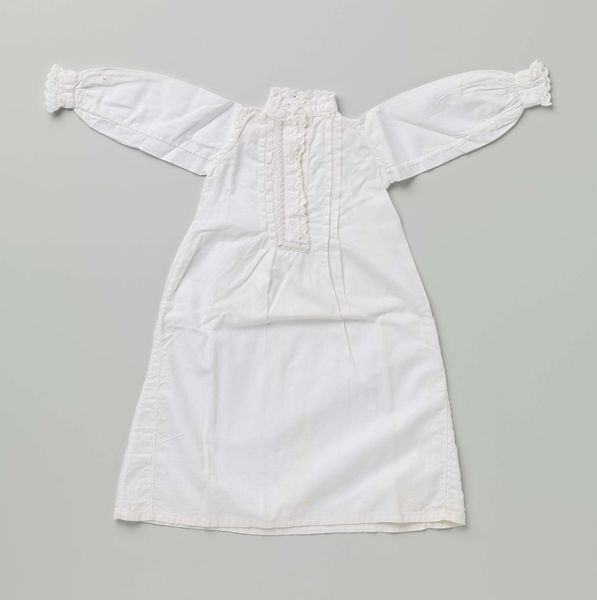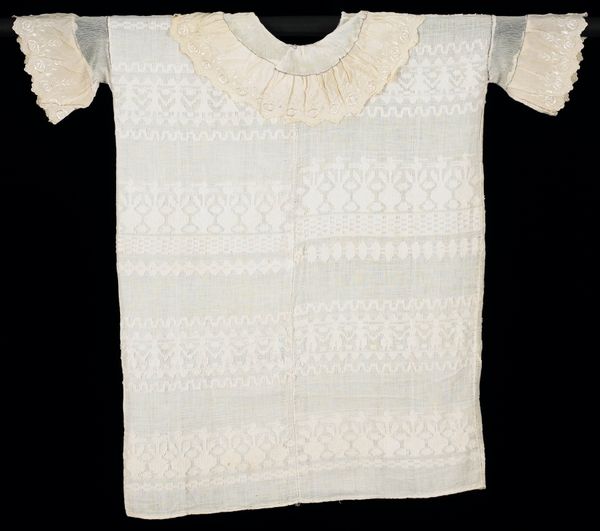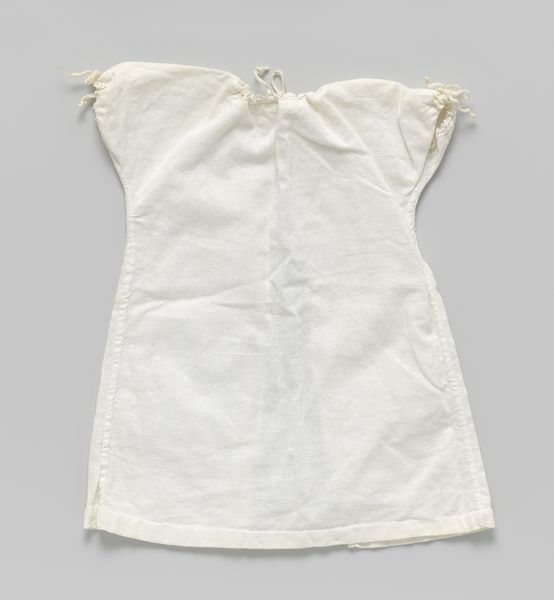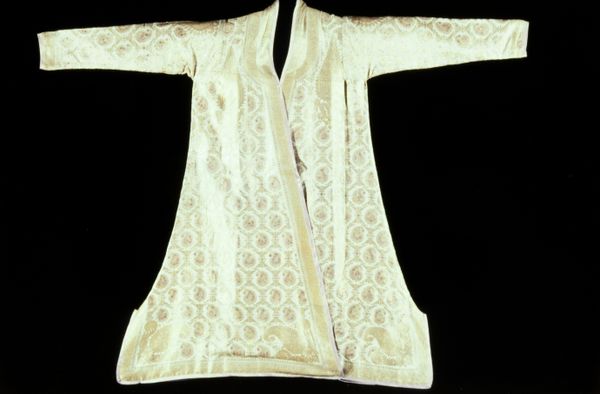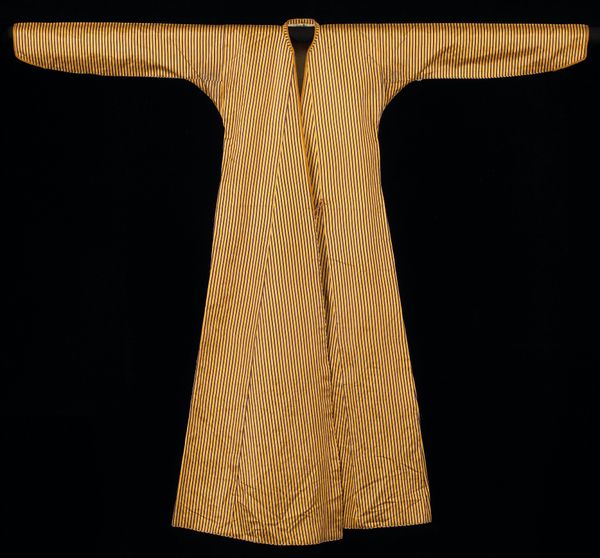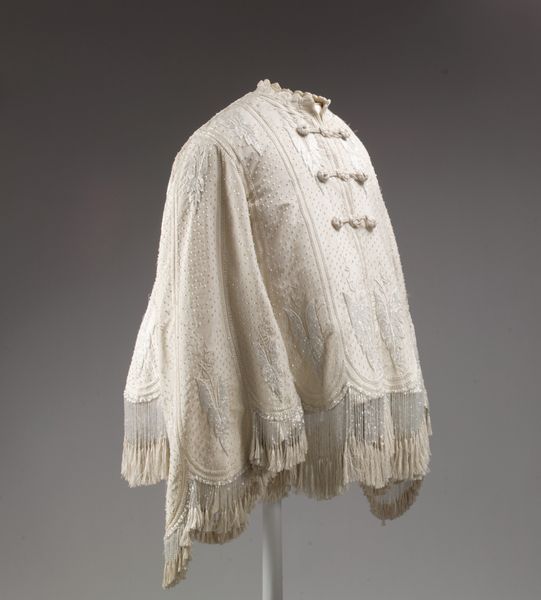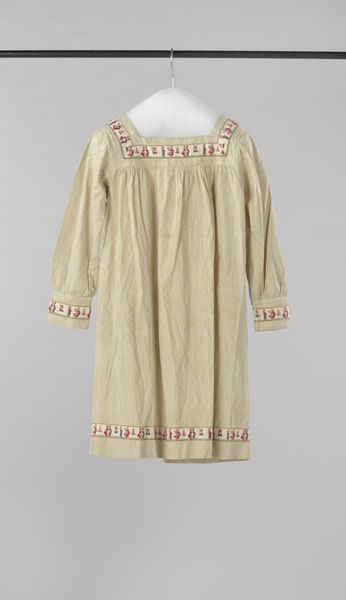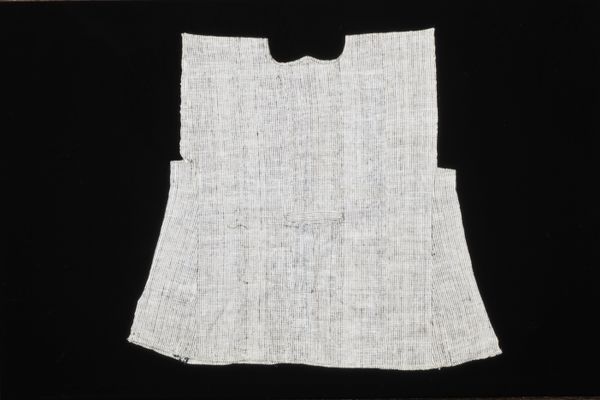
textile
#
fashion design
#
underwear fashion design
#
fashion mockup
#
fashion merchandise
#
textile
#
fashion and textile design
#
clothing theme
#
clothing photo
#
textile design
#
fashion sketch
#
clothing design
Copyright: Rijks Museum: Open Domain
Editor: Here we have what's labeled the "Shirt of Willem Frederik," circa 1650. It's crafted from textile and currently resides in the Rijksmuseum. It’s interesting how an article of clothing like this is presented as art. What can we understand by looking at this, specifically through a materialist lens? Curator: This seemingly simple garment offers a powerful insight into 17th-century Dutch society. It transcends "fashion merchandise" when we consider the labor, materials, and socio-economic context involved in its creation and consumption. Who made it, with what materials, and for whom? These are key questions. Editor: It’s interesting to think about it not as something just functional, but as an outcome of its production. Were these types of shirts commonplace? Curator: No, not at all. Think about the complexities involved in textile production at the time: from the cultivation of flax or cotton to the spinning of the yarn and the weaving of the fabric. These processes involved considerable manual labor, marking it not so mundane when viewing through a Marxist approach. That collar looks hand-crafted, too! Who do you think might have done that kind of specialized work? Editor: Maybe a skilled artisan within the household or a local workshop? Considering the subject was Willem Frederik, likely the textile quality and level of skill to create the lace trim indicate wealth, don't they? Curator: Precisely. So, by scrutinizing this 'simple' shirt, we begin to unravel stories of craftmanship, trade networks, class structures, and the conspicuous consumption habits of the Dutch elite. What feels striking about thinking of clothing of this period using these approaches? Editor: I suppose, I had never considered the social relationships embedded in everyday garments as so significant. It almost makes you think of contemporary clothing manufacturing! Curator: Exactly! It challenges the boundaries between "art" and "craft." It encourages a re-evaluation of value that still resonates today.
Comments
rijksmuseum about 2 years ago
⋮
Many Dutch burghers wore white linen undergarments, often decorated with lace. Because it was expensive to clean, white linen was a status symbol in the 17th century. This shirt with an embroidered red crown probably belonged to Willem Frederik, the son of Ernst Casimir. The rounded scalloping of the lace and the length of the shirt suggest it was made in 1640. Willem Frederik was then 27.
Join the conversation
Join millions of artists and users on Artera today and experience the ultimate creative platform.
